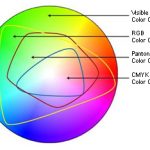
 Let me start out by saying that I’m not too sure how I would characterise this article, since it’s targeted at graphic arts professionals, but my observations are applicable to just about anyone with some particular skills for his or her field and who is looking at what we called “Want Ads” for suitable and hopefully gainful employment.
Let me start out by saying that I’m not too sure how I would characterise this article, since it’s targeted at graphic arts professionals, but my observations are applicable to just about anyone with some particular skills for his or her field and who is looking at what we called “Want Ads” for suitable and hopefully gainful employment.
Like most people who are not first-line relations to the Hiltons or Trumps, I’m registered with a number of online job search websites which, although I haven’t had the need to use in years, still let me know, on a daily basis, that there’s at least one hot new job out there with my name on it. Mostly, that means when my very specific keywords are exhausted, they’ll also throw in positions in aerospace engineering, geology and cat food sales. Perhaps the engineers responsible for drawing the A to B line between graphics arts professions and every other job on the planet should be offered an opportunity to look for work, and soon. Since my work is particularly technical, requiring a truly broad range of not only actual software skills, but also substantial creativity in problem-solving and the ability to reason out what staff and customer alike have in mind, I imagine that it wouldn’t be surprising to see a long list of desired features in a job candidate for my position.
I got an e-mail today from one of the mega job sites, featuring a Graphic Designer position with a very large company fairly local to me. As a matter of curiosity, I took a look, and it made me sad, not for myself, but for recent art school grads who have to actually consider making an application for that position. The listing starts out by letting the reader know that compensation is around $15 an hour. That’s right up front and will knock off about 99% of the professionals they’re attempting to attract with these skills:
- Bachelor’s degree in Art, Design, Advertising or other applicable field or equivalent required.
- Minimum five years experience in a publication design (4 color process).
- Knowledge of design theories and techniques, typography, and printing production required.
- Expert skills in graphics software, including Adobe Illustrator, Adobe Photoshop, Adobe InDesign, CorelDraw, Quark, and Microsoft Word, Excel, PowerPoint and Visio skills.
- Expert skills in multimedia software, including Flash and Dreamweaver.
- Experience working with electronic files for commercial print production.
- Knowledge of both Macintosh and PC platforms, and the ability to work in and convert files on both platforms.
- Strong knowledge of grammar and composition rules required for editing and proofreading material.
- Attention to detail with emphasis on accuracy and quality, and a critical eye in terms of aesthetics
- Typing skills of at least 55 wpm with a high level of accuracy.
- Ability to work in a fast-paced team environment.
- Ability to prioritize work to balance multiple projects and deadlines.
- Excellent verbal and written communication skills.
- Exceptional customer service skills.
What? Really? Expert skills in flipping burgers pays $10.50. Expert skills in Photoshop, though, can mean oh so many things. There are folks who are great at colour correction and those who are masters at paint and retouch and some who, like me, have extensive skills in skin and hair and yet others who excel at digital painting. The range of pay for those “expert” skills can be $30 an hour to hundreds of dollars an hour. Freelancers with a following routinely grab $200 an hour rates. So, okay, perhaps I’m going too far in beating on this employer for the term “expert” in their requirements. But that’s only one of eleven expert skills they’re looking for, for $4.50 more an hour than Chief Fryolator Wrangler at the local drive-through.
So, really, what kind of candidate are they seeking? One with a B.A. in Art, a recent grad, apparently, under thirty, since they also mention a minimum of five year’s experience. Five years ago, the tuition at my state’s public university for students seeking to acquire an B.A. in Art, the very well-respected Mason Gross School at Rutgers’, was about nine thousand a year. Four years of that is $36,000. So, the successful candidate would have to work 60 straight weeks and have no deductions taken from their pay in order to make that nut, while living in Mom and Dad’s basement and hitting them up for gas money. Of course, if said candidate was the offspring of wealthier parents who could afford to spring for the typical cost of an Ivy League-class school, like RISD or SAIC, that tuition bill – sans room and board, mind you – balloons to a mind-boggling $200K. That works out to a staggering 333 1/3 weeks of borrowing Dad’s car to get to work. Of course, that’s before taxes.
So, what should a “Graphic Designer” be making? According to Indeed.com’s survey of salaries for that position, about $73,000 in the New York area, where this job offering is positioned. That works out to about $35 an hour, more than double, if my fourth-grade arithmetic skills are right, than what the positions offers. It’s not even in the ballpark, regardless of the sport.
For a graphic arts professional, this ad is silly. Forgetting about the salary component, the position seems to call for skills that are actually not typically related in large- or even mid-scale production environments. Some “designers” will have stronger skills in Illustrator with some knowledge of how to cut masks and make basic appearance adjustments in Photoshop. InDesign is its own animal, and a very powerful one at that. There are specialists within the InDesign community that break down into designing for publications, like books, and other who do ad layout production and others who specialise in forms and documents. An expert in InDesign may occasionally do a graphic in Illustrator or composite art in PS, but there aren’t enough hours in the day to be an expert in all three. But wait – there’s more! This employer also needs the candidate to have master-level skills in software that I certainly haven’t seen much of in the real world in years: Quark and CorelDraw. (They left off the exclamation point after that Corel product, so I follow suit here.) Don’t get me wrong – I cut my teeth on CorelDraw – and Pagemaker and Quark, products that are just not used in any serious production environment anymore because, um, Adobe. Freehand, anyone?
In the decades I’ve been involved with doing graphic art composition, let’s call it, either as my main job or as a significant-enough part of my job, I have had the opportunity to use and learn many different kinds of software. Unlike most “graphic designers” I know, I’ve had a parallel life developing for the web, including learning and using Flash and Dreamweaver. With the advent of CMSes like WordPress, Joomla (like this site) and Drupal, CSS, HTML5 and Javascript, that old-school software represents an era getting rapidly tiny in the rear-view mirror of web development as it barrels along today. I realise that citing my own experience is anecdotal evidence, but if you’re a graphic arts pro, either on the print side or the web dev side, you will know that there are real divides in all but the smallest mom-and-pops and the twain don’t meet because no one can be an expert in everything.
But this listing requires expert-level skills in everything, so what is an applicant to do? The knee-jerk answer is to not apply, since the firm is large and is likely using resume-screening software that will dump your submission before any human can lay eyes on it. It’s better for the job-seeker to understand that an ad like this isn’t written by anyone serious about trying to fill a position in a professional organisation that will advance your career in any way. Instead, take it as a way to spot a careless employer that doesn’t understand, and possibly doesn’t care, that your creative talent and technical skills represent a significant investment that you bring to the table and that they will be expected to reciprocate in order to compete for you.
There’s little job security in the old “job-for-life” sense anymore. It’s up to the employee to continually add value to what he or she is able to offer. That’s a full-time job in of itself. Being able to recognise an employer with the potential to help maintain and expand upon those skills and to challenge them – now, that’s real job security.





